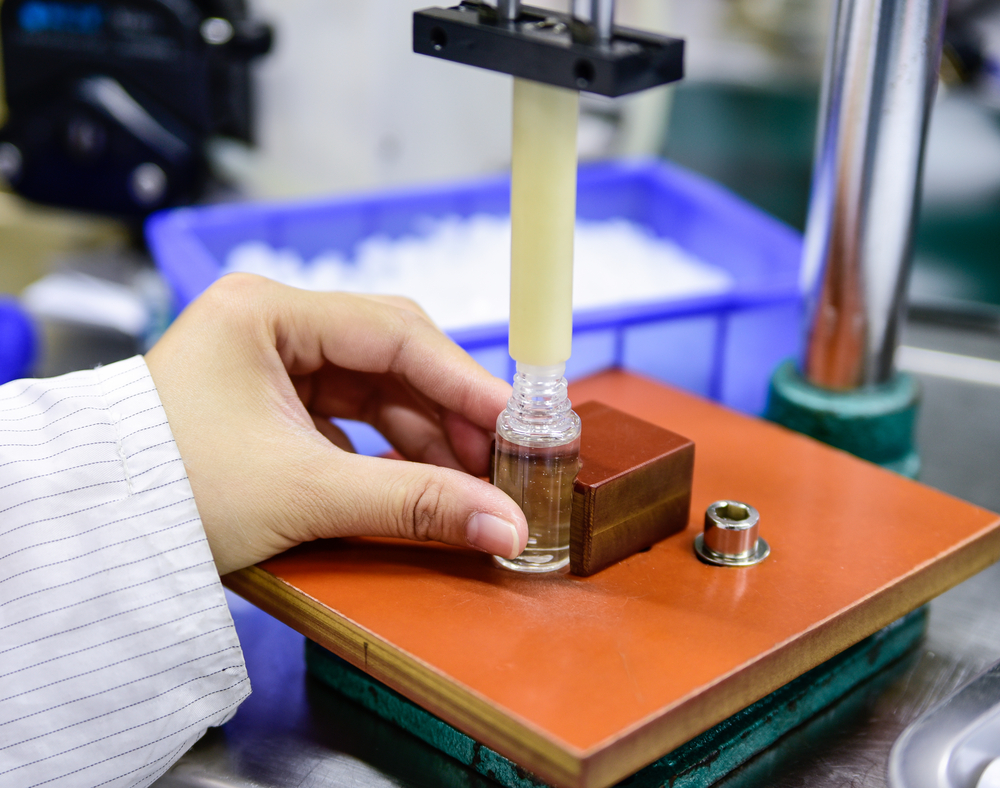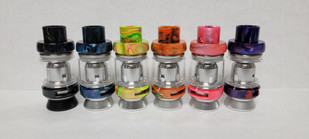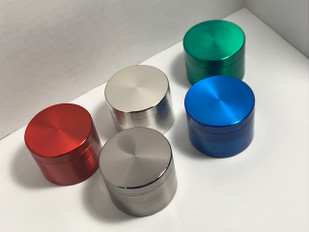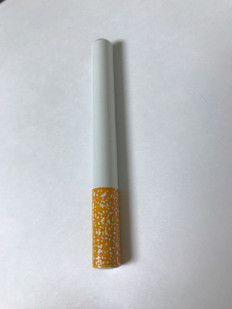- Home
- The Vape Mall Blog
- How is Tobacco-Free Nicotine E-Liquid Changing the Vaping Industry?
How is Tobacco-Free Nicotine E-Liquid Changing the Vaping Industry?
Posted by on
 The vaping industry has been around for well over a
decade now, and its evolution has been rapid and impressive. We’ve all observed the radical advancements
in vaping technology in terms of the astounding hardware that has come out over
the years. But, e-liquids
themselves have evolved as well, in equally stunning ways.
The vaping industry has been around for well over a
decade now, and its evolution has been rapid and impressive. We’ve all observed the radical advancements
in vaping technology in terms of the astounding hardware that has come out over
the years. But, e-liquids
themselves have evolved as well, in equally stunning ways.
The large majority of people who vape are primarily interested in the nicotine that’s in e-liquids, unsurprisingly. But, few question how the nicotine in e-liquids is derived. When the vaping market first began, e-liquids were all made with freebase nicotine, which is the same nicotine used in cigarettes. Invented by the tobacco companies several decades ago, freebase nicotine is chemically altered tobacco-derived nicotine that’s designed to be stronger, thus making it more addictive. The issue with freebase nicotine is that it was never designed to be vaporized, and even proved to be extremely harsh and irritating along the throat when vaped at higher output levels.
Then came salt-based nicotine, which is an alternative to freebase nicotine. It’s nicotine extracted from tobacco and combined with benzoic acid, which makes it more potent and less harsh. This type of nicotine is now extremely popular, and most e-cigarettes use it.
Now, there is a new development in the e-liquid industry, and it’s tobacco-free nicotine, which is commonly shortened to “TFN”. As you will see, TFN could very well become the future of the vaping industry.
What Exactly is Tobacco-Free Nicotine?
Up until now, the only way to infuse nicotine into an e-liquid was to extract the nicotine compound from the tobacco plant. Ideally, a nicotine concentrate derived from tobacco contains pure nicotine without any trace levels of other compounds in the plant material. But, the process of extracting the nicotine compound is quite difficult, and it’s not as uncommon as one may think for an e-liquid’s nicotine extract to contain other tobacco compounds that disrupt the purity levels that vapers desire.
Tobacco-free nicotine, or TFN, is a synthetic alternative that was developed using advanced molecular technology. Synthetic nicotine, by definition, does not come from organic material, but chemicals produced in a laboratory. What’s fascinating about synthetic nicotine is that on a molecular level, it behaves exactly like true, organic nicotine when inhaled into the body. It provides the same effects of traditional nicotine, and even has been found countless times to satisfy nicotine cravings just as effectively as nicotine derived from the tobacco plant.
Furthermore, tobacco-free nicotine is completely flavorless, odorless and colorless. This is the ideal for tobacco-derived nicotine, but the latter often falls short due to the difficulty of isolating the specific nicotine compound from the other compounds in the plant.
How is Tobacco-Free Nicotine Made?
Creating synthetic nicotine relies on extremely advanced technology to which scientists now have access. Crafting nicotine on the molecular level is no easy feat, and thus requires a reasonable deal of effort. Various chemicals are used to produce a compound that mimics nicotine perfectly, including sulfuric acid and niacin. All of the ingredients used to produce TFN come from FDA-approved suppliers, to ensure maximum safety.
Making tobacco-free nicotine isn’t simply a matter of throwing a few ingredients into a mixing vessel and trying them out. Laboratory scientists work very hard to analyze the molecular composition of tobacco-derived nicotine and match it perfectly using synthetic ingredients. To craft something that is biologically identical is nothing short of impressive, given the distinctive properties of nicotine that formerly only occurred in nature.
What Role Does Technology Have in Creating Tobacco-Free Nicotine?
Overall, tobacco-free nicotine wouldn’t be possible if it weren’t for modern technology. To craft a synthetic product that is molecularly identical to a compound that occurs in nature simply can’t be done without the help of technological tools and processes that are relatively new. It requires the ability to carefully isolate individual compounds and molecules, intensely studying each one for production and comparison to traditional nicotine.
Even the testing process requires technology, as it demands that the TFN be analyzed for its chemical composition and purity levels. Once upon a time, analyzing these compounds was a much more tedious and difficult process than it is today.
Ultimately, TFN offers yet another example of how technology is used to improve our vaping experience overall. We’ve watched vaping go from a niche market to a mainstream success story, and we have technology to thank. In an effort to make vaping safe and effective, scientists have continuously developed new advancements that improve the ability that vaping has to meet our needs and decrease the risk of vapers going back to tobacco products. TFN is just another way in which vaping has drifted from its direct relationship to tobacco, by ensuring that no aspect of vaping exposes the user to any tobacco derivatives.
Tobacco-free nicotine is still a new addition to the vaping market, but we anticipate that it will continue to grow in popularity in the years to come. And, as a result, we will likely see TFN evolve itself, as more and more technology comes out that streamlines and improves the process of developing it in a laboratory.
Tobacco-Free Nicotine and the FDA
Maybe you know that the U.S Food and Drug Administration (FDA) has had a complicated relationship with the vaping industry for years. According to the FDA, all vaping products made with tobacco-derived nicotine are considered tobacco products. This has meant that standard vaping products have been subjected to the same regulations as products like cigarettes and chewing tobacco.
The Deeming Rule of 2016 developed by the FDA determined that moving forward, all vaping products would be subjected to the same standards and rules as traditional tobacco products. Complicating matters further, the FDA subjected the vaping industry to the PMTA deadline this year, which stands for the premarket tobacco application. This required all vaping companies to submit their products for FDA approval individually, due to their being considered tobacco products.
This rule demanded that vaping products must be proven to be conducive to public health. But, the FDA’s guidelines regarding vaping products have been notoriously strict, and some argue that they have been stricter than standard tobacco products like cigarettes.
But, fascinatingly, the FDA has also determined that tobacco-free nicotine is not classified as a tobacco product. Therefore, companies that produce e-juices made with TFN rather than tobacco-derived nicotine are seemingly exempt from these regulations and approval requirements.
Why are More Vaping Companies Using Tobacco-Free Nicotine?
Now, you can understand a major appeal of using TFN rather than tobacco-derived nicotine. E-liquid companies feel that they are essentially off the hook as they are no longer classified as tobacco companies. There are other appealing factors to using TFN as well.
Reason #1: Tobacco-Derived Nicotine is Known for Its Impurities
Nicotine that’s derived from the tobacco plant is known for potentially having decently high levels of impurities. Many of these impurities are known toxins to the human body. Regulating the purification process of tobacco-derived nicotine compounds has been a struggle, which means that users of e-liquids containing this derivative could be at risk of inhaling potentially harmful impurities on a daily basis.
Tobacco-free nicotine does not contain such impurities, because its production is completely controlled, and because, obviously, it does not come from the tobacco plant. This is a huge advantage, and a serious gamechanger for an industry constantly trying to prove its safety and legitimacy.
Reason #2: It’s Molecularly Identical to Tobacco-Derived Nicotine
And, like we said, TFN behaves just like regular nicotine in the body, and so there is no difference when it comes to how this type of e-liquid affects a person. It still provides the same satisfying nicotine buzz.
Reason #3: Offers a Cleaner Flavor and Aroma
Interestingly, because TFN is completely free of impurities, it’s more flavorless and odorless than nicotine extracted from the tobacco plant. What this means is that e-liquid companies don’t need to use as much flavoring and sweetener in order to attempt to mask the faint tobacco flavor of e-liquids. This leads to cleaner formulas overall.
What Impact Will Tobacco-Free Nicotine Have on the Vaping Industry?
So, you’re now wondering what the future holds for TFN in our industry. Well, for one thing, if the entire e-liquid industry were to switch to this type of nicotine, then it would be completely isolated from the tobacco industry. Right now, TFN is a patented substance, which means that e-liquid companies cannot produce it in house. But, things could change in the future, which would give these brands more control over their products, which is always a good thing.
Again, Tobacco-free nicotine is a surprising addition to vaping’s modern landscape, offering a completely synthetic alternative that has the advantage of being 100% pure, flavorless, colorless, and odorless, while still providing the exact same chemical response in the body when inhaled. And, as the vaping industry continues to evolve, we anticipate that this new technology will grow in popularity, while allowing vapers to experience desirable doses of nicotine without consuming any aspect of the actual tobacco plant.
At The Vape Mall, we’re excited about how tobacco-free nicotine will take the world of vaping to new heights, offering a cleaner product while helping e-liquid brands stay independent from the tobacco industry.
 Loading... Please wait...
Loading... Please wait...



















